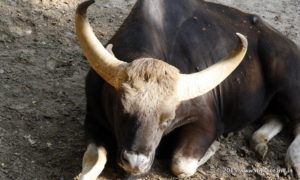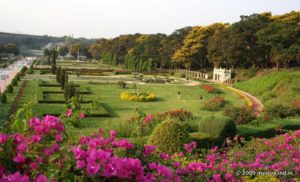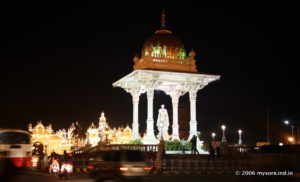
 Scan to see this page on your mobile phone
Scan to see this page on your mobile phoneNanjangud, located 20km South of Mysore is a religiously significant destination owing to the Shiva Temple in the middle of the town. In fact Lord Shiva is called Nanjundeshwara literally means the God who drank poison.So the temple is known after this aspect of Shiva, the Nanjundeshwara Temple and the town called Nanjangud, means the place where Nanjundeshwara resides.
According to Hindu mythology, in a rare team effort, the Gods and the demons churned the ocean in search of the nectar of immortality. During this process many artifacts emerged from the ocean, some desirable and some no so. For example the poison that threatened the universe, if it spilled and spread. To save universe from that happening, Lord Shiva drank. Goddess Parvathi, Shiva's consort held his neck tight from going the poison down his throat and spreading his body. Now his neck turned blue. Lord Shiva is known by various names around this episode.
As you approach Nanjangud , you can see the imposing Chola style tower dominating the skyline. The temple is right on the banks of Kapila (Kabini) river separated by the highway to Chamarajaraja puram, Satyamangalam and Coimbatore.
The Mysore Airport is rather close to Nanjangud than to Mysore city. If you are coffee fan, it is difficult to skip that inviting aroma while passing this town. That because Nestle's factory is around the corner in the town. Some you you may find it intriguing the distillery of Bacardi Martini India Ltd at Nanjangud! And of course the popular two wheeler Scooty comes out of the TVS factory in Nanjangud. So is apparels from the leading brand Reid & Taylor.
Above all Nanjangud is popular in the region for a culinary delight, the "Nanjangud Rasabale", a variety of banana that commands an overwhelming popularity.
If you travel to Nanjangud by road, you'll not fail to notice an old railway bridge by your left, as you cross the Kabini river and enter the town. You'll also notice a number of old railway racks on the bridge. There some interesting, some not so interesting stories aroudnd this. The interesting one first.
The bridge is more than 270 years old, built in Gothic style across the formidable Kabini River around 1735 CE by Dalvoy Devaraj. An engineering marvel of those times. Built with brick,lime mortar and sandstone (no concrete cement!), it was originally intent for bullock carts and horse carts to cross Kabini. During the colonial period, the bridge was good enough to make a railway line over it. In 1902 the bridge was converted into a railway bridge. Some even call this as the oldest railway bridge in the world. During the 70s a modern bridge was constructed parallel to this heritage bridge.
Now comes the second part of the story, about those old rail-racks standing over the bridge. The India railways wanted to convert this functionally abandoned bridge into a heritage site, a 'restaurant on the wheels' sort using those old rakes. They brought those rakes, but somehow they could not find the funds to materialize this idea.
You can catch a city bus from Mysore to Nanjangud. If you have spare time, catch one of those few daily train services between Mysore and Chamarajanagar via Nanjangud.
By the way road distance from Bangalore to Nanjangud is around 160km.














